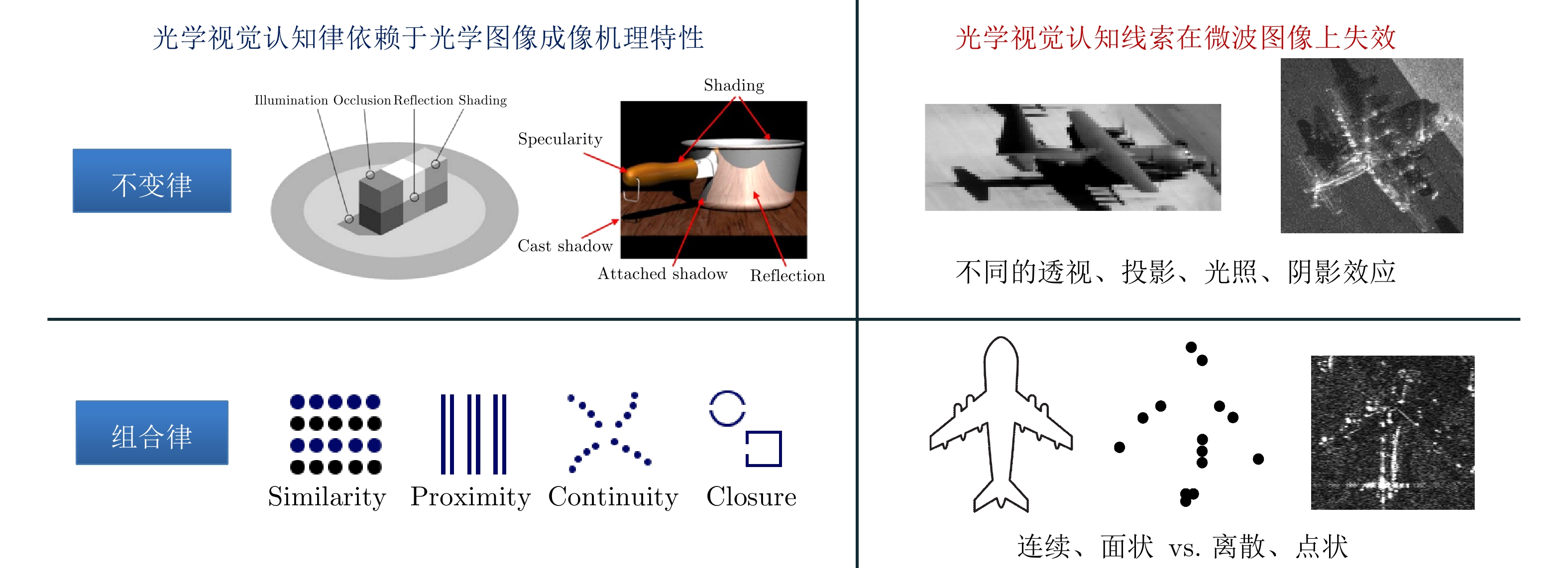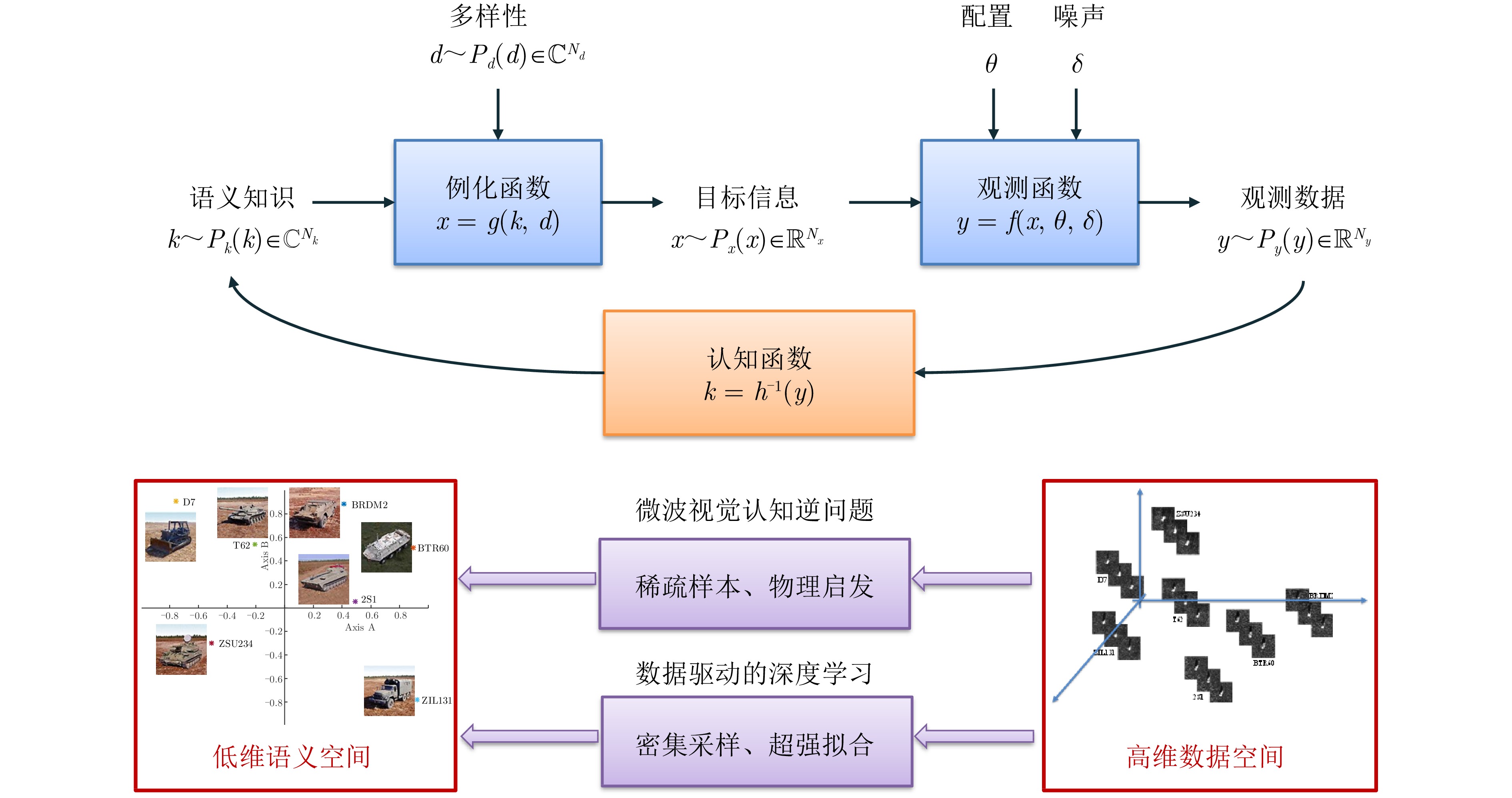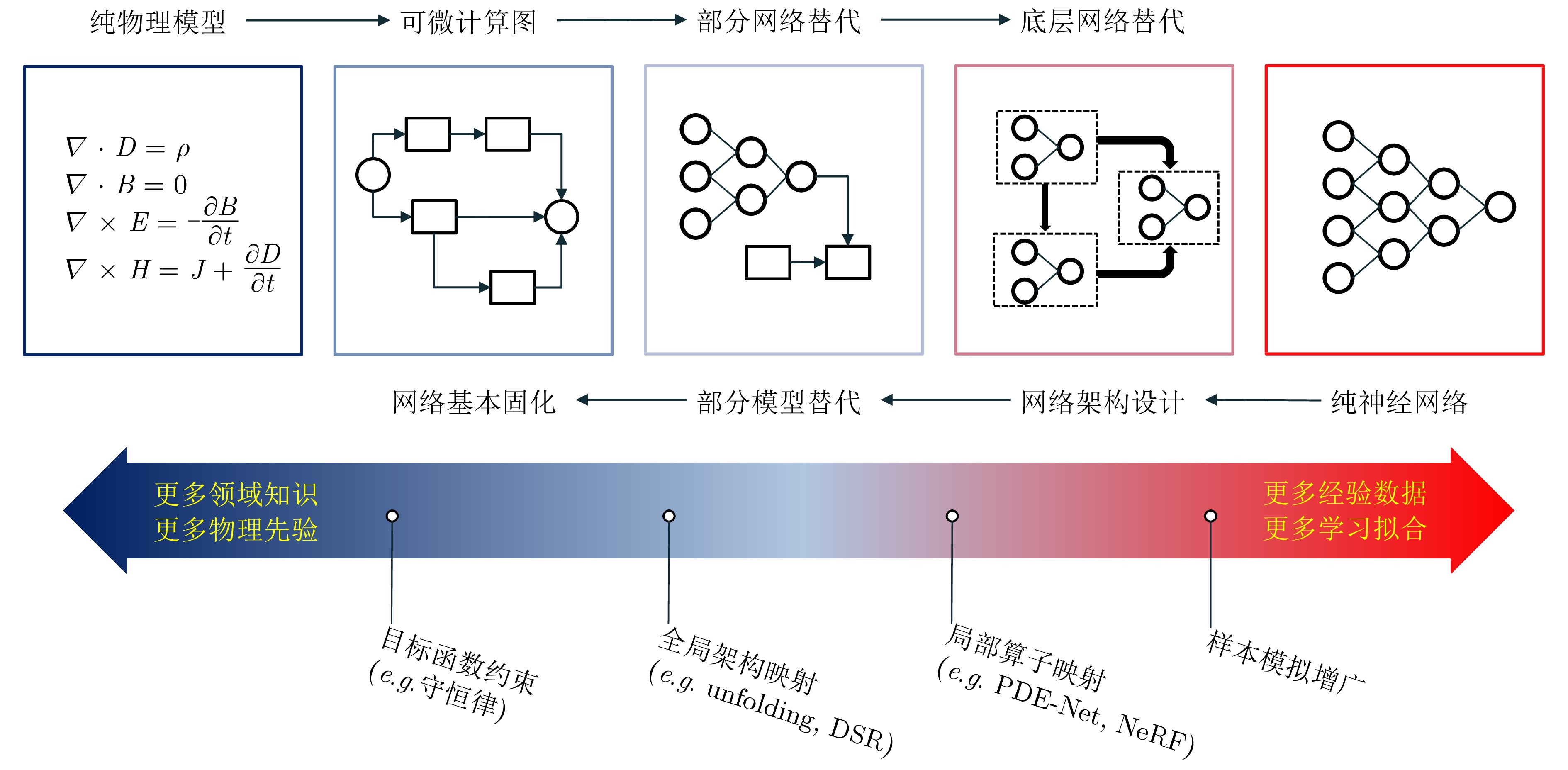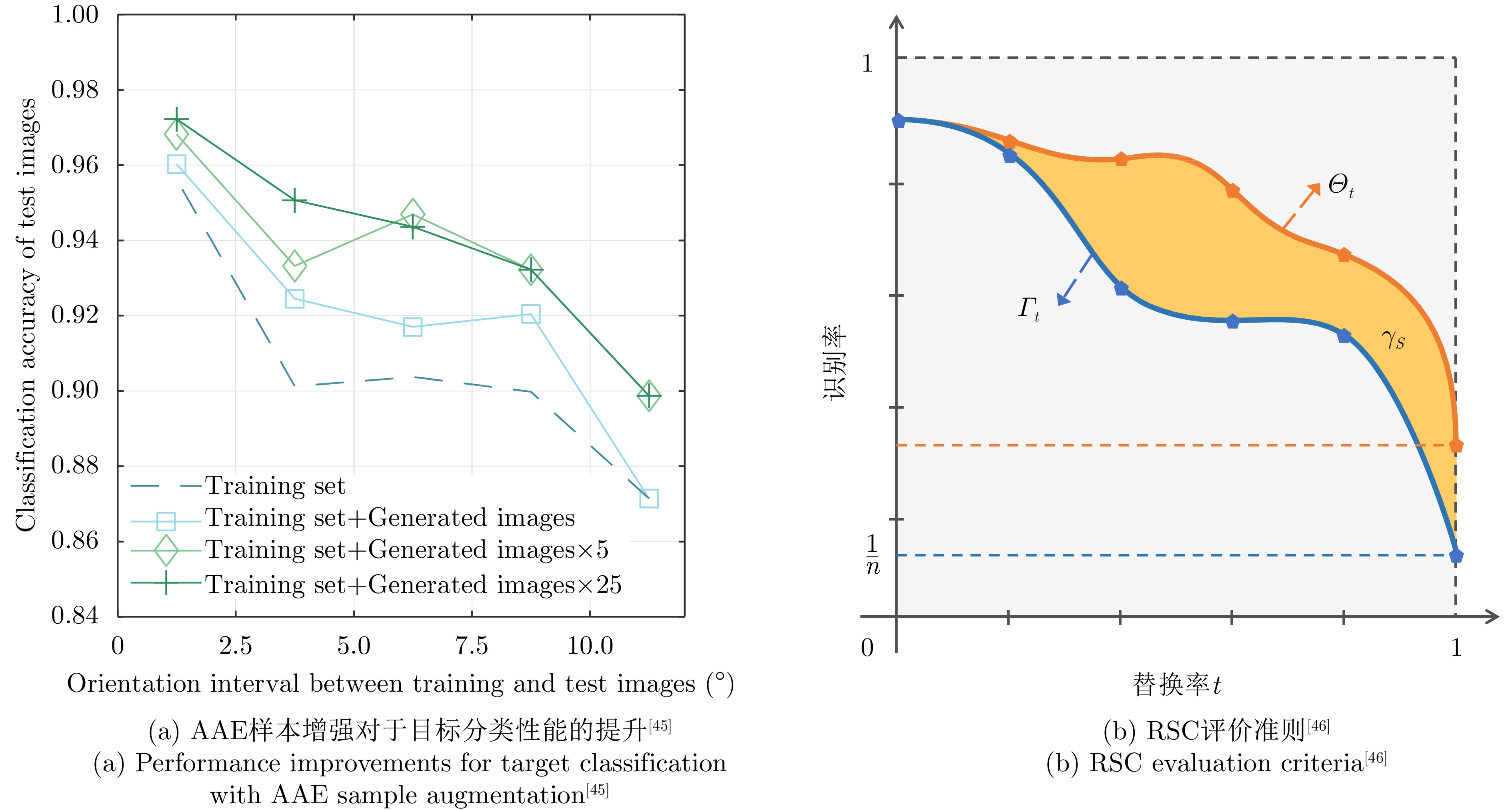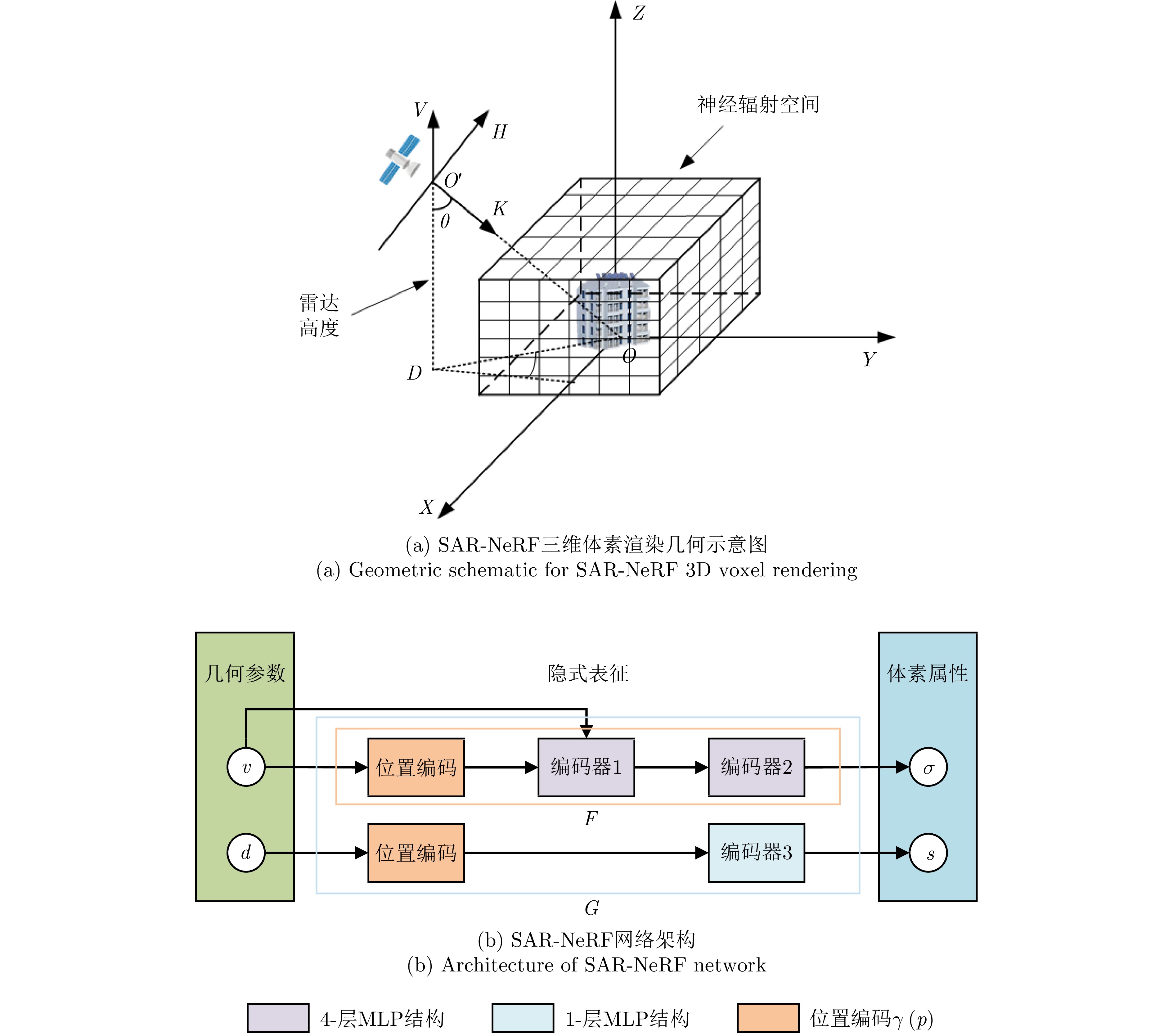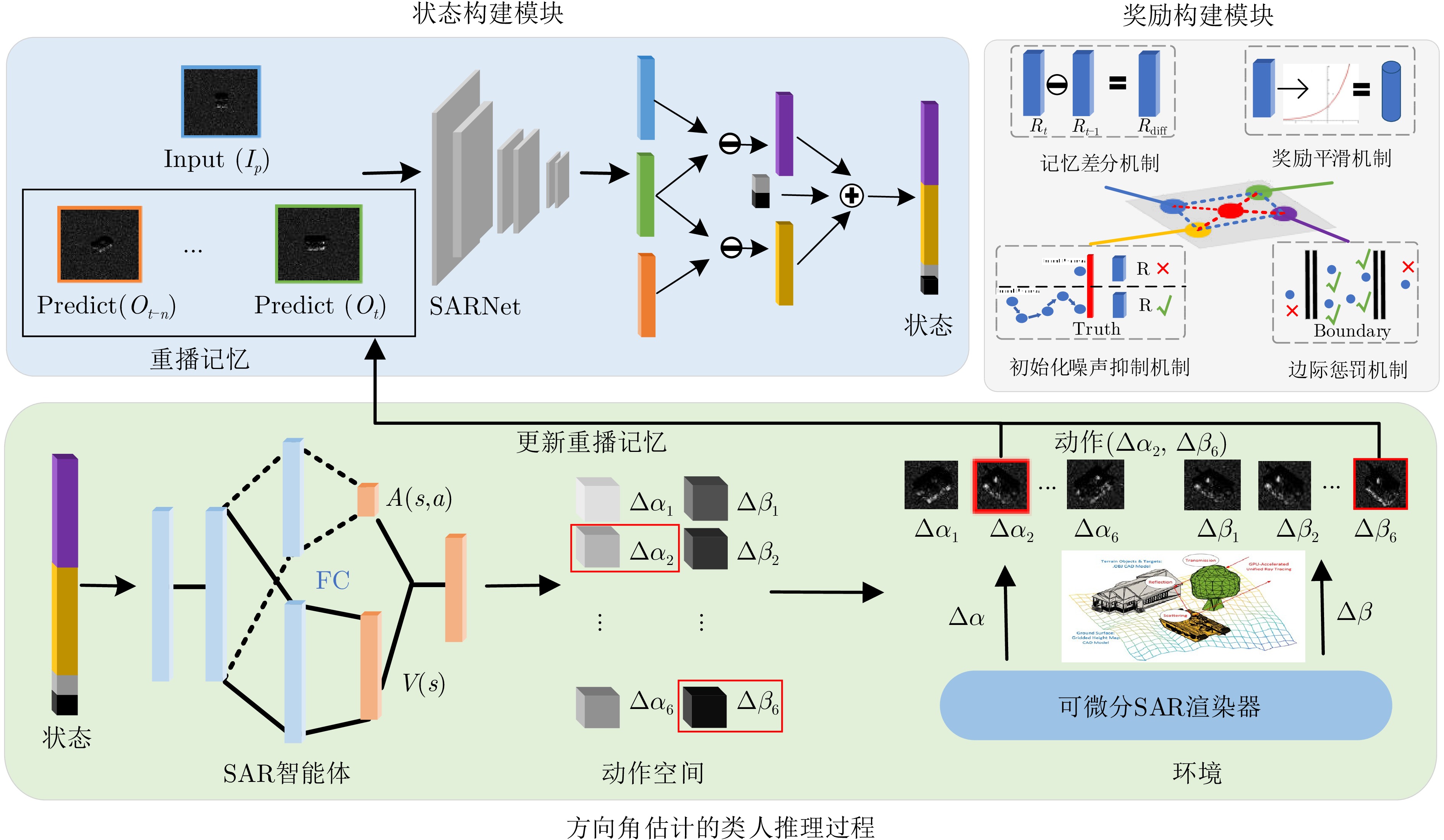| [1] |
WU Yirong. Concept on multidimensional space joint-observation SAR[J]. Journal of Radars, 2013, 2(2): 135–142. doi: 10.3724/SP.J.1300.2013.13047. |
| [2] |
徐丰, 王海鹏, 金亚秋. 深度学习在SAR目标识别与地物分类中的应用[J]. 雷达学报, 2017, 6(2): 136–148. doi: 10.12000/JR16130. XU Feng, WANG Haipeng, and JIN Yaqiu. Deep learning as applied in SAR target recognition and terrain classification[J]. Journal of Radars, 2017, 6(2): 136–148. doi: 10.12000/JR16130. |
| [3] |
徐丰, 王海鹏, 金亚秋. 合成孔径雷达图像智能解译[M]. 北京: 科学出版社, 2020: 1–463.
XU Feng, WANG Haipeng, and JIN Yaqiu. Intelligent Interpretation of Synthetic Aperture Radar Imagery[M]. Beijing: Science Press, 2020: 1–463.
|
| [4] |
杜兰, 王兆成, 王燕, 等. 复杂场景下单通道SAR目标检测及鉴别研究进展综述[J]. 雷达学报, 2020, 9(1): 34–54. doi: 10.12000/JR19104. DU Lan, WANG Zhaocheng, WANG Yan, et al. Survey of research progress on target detection and discrimination of single-channel SAR images for complex scenes[J]. Journal of Radars, 2020, 9(1): 34–54. doi: 10.12000/JR19104. |
| [5] |
郭炜炜, 张增辉, 郁文贤, 等. SAR图像目标识别的可解释性问题探讨[J]. 雷达学报, 2020, 9(3): 462–476. doi: 10.12000/JR20059. GUO Weiwei, ZHANG Zenghui, YU Wenxian, et al. Perspective on explainable SAR target recognition[J]. Journal of Radars, 2020, 9(3): 462–476. doi: 10.12000/JR20059. |
| [6] |
黄钟泠, 姚西文, 韩军伟. 面向SAR图像解译的物理可解释深度学习技术进展与探讨[J]. 雷达学报, 2022, 11(1): 107–125. doi: 10.12000/JR21165. HUANG Zhongling, YAO Xiwen, and HAN Junwei. Progress and perspective on physically explainable deep learning for synthetic aperture radar image interpretation[J]. Journal of Radars, 2022, 11(1): 107–125. doi: 10.12000/JR21165. |
| [7] |
邢孟道, 谢意远, 高悦欣, 等. 电磁散射特征提取与成像识别算法综述[J]. 雷达学报, 2022, 11(6): 921–942. doi: 10.12000/JR22232. XING Mengdao, XIE Yiyuan, GAO Yuexin, et al. Electromagnetic scattering characteristic extraction and imaging recognition algorithm: A review[J]. Journal of Radars, 2022, 11(6): 921–942. doi: 10.12000/JR22232. |
| [8] |
LI Jun, SUN Xian, YU Hanwen, et al. Special topic: Artificial intelligence innovation in remote sensing[J]. Scientia Sinica Informationis, 2023, 53(5): 1026. doi: 10.1360/SSI-2023-0103. |
| [9] |
高勋章, 张志伟, 刘梅, 等. 雷达像智能识别对抗研究进展[J]. 雷达学报, 2023, 12(4): 696–712. doi: 10.12000/JR23098. GAO Xunzhang, ZHANG Zhiwei, LIU Mei, et al. Intelligent radar image recognition countermeasures: A review[J]. Journal of Radars, 2023, 12(4): 696–712. doi: 10.12000/JR23098. |
| [10] |
罗汝, 赵凌君, 何奇山, 等. SAR图像飞机目标智能检测识别技术研究进展与展望[J]. 雷达学报, 2024, 13(2): 307–330. doi: 10.12000/JR23056. LUO Ru, ZHAO Lingjun, HE Qishan, et al. Intelligent technology for aircraft detection and recognition through SAR imagery: Advancements and prospects[J]. Journal of Radars, 2024, 13(2): 307–330. doi: 10.12000/JR23056. |
| [11] |
刘宏伟, 位寅生, 关键, 等. “雷达智能探测新技术专题”编者按[J]. 雷达学报, 2020, 9(4): 封二.
LIU Hongwei, WEI Yinsheng, GUAN Jian, et al. Editorial comments of special issue on novel the intelligent radar detecting technology[J]. Journal of Radars, 2020, 9(4): Inside front cover.
|
| [12] |
金亚秋, 徐丰. 加强智能科学交叉领域研究[J]. 科技导报, 2018, 36(17): 1.
JIN Yaqiu and XU Feng. Enhance the research in interdisciplinary fields of intelligent science[J]. Science & Technology Review, 2018, 36(17): 1.
|
| [13] |
XU Feng and JIN Yaqiu. From the emergence of intelligent science to the research of microwave vision[J]. Science & Technology Review, 2018, 36(10): 30–44. doi: 10.3981/j.issn.1000-7857.2018.10.004. |
| [14] |
金亚秋. 多模式遥感智能信息与目标识别: 微波视觉的物理智能[J]. 雷达学报, 2019, 8(6): 710–716. doi: 10.12000/JR19083. JIN Yaqiu. Multimode remote sensing intelligent information and target recognition: Physical intelligence of microwave vision[J]. Journal of Radars, 2019, 8(6): 710–716. doi: 10.12000/JR19083. |
| [15] |
丁赤飚, 仇晓兰, 徐丰, 等. 合成孔径雷达三维成像—从层析、阵列到微波视觉[J]. 雷达学报, 2019, 8(6): 693–709. doi: 10.12000/JR19090. DING Chibiao, QIU Xiaolan, XU Feng, et al. Synthetic aperture radar three-dimensional imaging—from TomoSAR and array InSAR to microwave vision[J]. Journal of Radars, 2019, 8(6): 693–709. doi: 10.12000/JR19090. |
| [16] |
丁赤飚, 徐丰, 董秋雷, 等. “合成孔径雷达微波视觉理论与技术专刊”编者按[J]. 雷达学报, 2022, 11(1): 封二.
DING Chibiao, XU Feng, DONG Qiulei, et al. Editorial comments of theory and system of synthetic aperture radar microwave vision[J]. Journal of Radars, 2022, 11(1): Inside front cover.
|
| [17] |
ROCK I and DIVITA J. A case of viewer-centered object perception[J]. Cognitive Psychology, 1987, 19(2): 280–293. doi: 10.1016/0010-0285(87)90013-2. |
| [18] |
|
| [19] |
MARR D. Vision: A Computational Investigation into the Human Representation and Processing of Visual Information[M]. Cambridge: MIT Press, 2010: 31–38.
|
| [20] |
WAGEMANS J, ELDER J H, KUBOVY M, et al. A century of Gestalt psychology in visual perception: I. Perceptual grouping and figure-ground organization[J]. Psychological Bulletin, 2012, 138(6): 1172–1217. doi: 10.1037/a0029333. |
| [21] |
MONGA V, LI Yuelong, and ELDAR Y C. Algorithm unrolling: Interpretable, efficient deep learning for signal and image processing[J]. IEEE Signal Processing Magazine, 2021, 38(2): 18–44. doi: 10.1109/MSP.2020.3016905. |
| [22] |
LIU Zhuoyang and XU Feng. Interpretable neural networks: Principles and applications[J]. Frontiers in Artificial Intelligence, 2023, 6: 974295. doi: 10.3389/frai.2023.974295. |
| [23] |
XU Feng and ZHANG Xu. On the concept of semantic electromagnetics[C]. 2022 International Applied Computational Electromagnetics Society Symposium (ACES-China), Xuzhou, China, 2022: 1–3. doi: 10.1109/ACES-China56081.2022.10065038. |
| [24] |
FU Shilei and XU Feng. Differentiable SAR renderer and image-based target reconstruction[J]. IEEE Transactions on Image Processing, 2022, 31: 6679–6693. doi: 10.1109/TIP.2022.3215069. |
| [25] |
KARNIADAKIS G E, KEVREKIDIS I G, LU Lu, et al. Physics-informed machine learning[J]. Nature Reviews Physics, 2021, 3(6): 422–440. doi: 10.1038/s42254-021-00314-5. |
| [26] |
GUO Qian, XU Huilin, and XU Feng. Causal adversarial autoencoder for disentangled SAR image representation and few-shot target recognition[J]. IEEE Transactions on Geoscience and Remote Sensing, 2023, 61: 5221114. doi: 10.1109/TGRS.2023.3330478. |
| [27] |
LI Shangyang, LIU Zhuoyang, FU Shilei, et al. Intelligent beamforming via physics-inspired neural networks on programmable metasurface[J]. IEEE Transactions on Antennas and Propagation, 2022, 70(6): 4589–4599. doi: 10.1109/TAP.2022.3140891. |
| [28] |
刘彻, 杨恺乔, 鲍江涵, 等. 智能电磁计算的若干进展[J]. 雷达学报, 2023, 12(4): 657–683. doi: 10.12000/JR23133. LIU Che, YANG Kaiqiao, BAO Jianghan, et al. Recent progress in intelligent electromagnetic computing[J]. Journal of Radars, 2023, 12(4): 657–683. doi: 10.12000/JR23133. |
| [29] |
SOHL-DICKSTEIN J, WEISS E A, MAHESWARANATHAN N, et al. Deep unsupervised learning using nonequilibrium thermodynamics[C]. The 32nd International Conference on International Conference on Machine Learning, Lille, France, 2015: 2256–2265.
|
| [30] |
MILDENHALL B, SRINIVASAN P P, TANCIK M, et al. NeRF: Representing scenes as neural radiance fields for view synthesis[J]. Communications of the ACM, 2022, 65(1): 99–106. doi: 10.1145/3503250. |
| [31] |
GOODFELLOW I J, POUGET-ABADIE J, MIRZA M, et al. Generative adversarial nets[C]. The 27th International Conference on Neural Information Processing Systems, Montreal, Canada, 2014: 2672–2680.
|
| [32] |
EDELMAN S. On What it Means To See, and What We Can Do About It[M]. DICKINSON S, LEONARDIS A, SCHIELE B, et al. Object Categorization: Computer and Human Vision Perspectives. Cambridge: Cambridge University Press, 2009: 69–86.
|
| [33] |
LECUN Y. A path towards autonomous machine intelligence version 0.9.2, 2022-06-27[EB/OL]. https://openreview.net/pdf?id=BZ5a1r-kVsf, 2022.
|
| [34] |
FRISTON K. Is the free-energy principle neurocentric?[J]. Nature Reviews Neuroscience, 2010, 11(8): 605. doi: 10.1038/nrn2787-c2. |
| [35] |
ZHANG Zhengquan and XU Feng. An overview of the free energy principle and related research[J]. Neural Computation, 2024. doi: 10.1162/neco_a_01642. |
| [36] |
尤瑞希, 钱昱彤, 徐丰. 格式塔感知规律在SAR图像中的有效性初探[J]. 雷达学报, 2024, 13(2): 345–359. doi: 10.12000/JR23187. YOU Ruixi, QIAN Yutong, and XU Feng. Preliminary research on the effectiveness of Gestalt perceptual principles in SAR images[J]. Journal of Radars, 13(2): 345–359. doi: 10.12000/JR23187. |
| [37] |
LI Dong and ZHANG Yunhua. Epipolar geometry comparison of SAR and optical camera[C]. SPIE 9901, 2nd ISPRS International Conference on Computer Vision in Remote Sensing (CVRS 2015), Xiamen, China, 2015: 99010V. doi: 10.1117/12.2234943. |
| [38] |
JIA Hecheng and XU Feng. Ship Detection in SAR Images with Human-in-the-Loop[EB/OL]. https://arxiv.org/abs/2401.08213, 2024.
|
| [39] |
ZHANG Xu, XU Feng, YANG Ying, et al. A primitive scatterer dictionary for semantic representation of radar target images[J]. IEEE Transactions on Antennas and Propagation, 2023. doi: 10.1109/TAP.2023.3321386. |
| [40] |
ZHANG Xu, XU Feng, and JIN Yaqiu. A unified bidirectional scattering distribution function for convex quadric surface[J]. IEEE Transactions on Geoscience and Remote Sensing, 2023, 61: 2003015. doi: 10.1109/TGRS.2023.3294017. |
| [41] |
ZHANG Xu and XU Feng. Coherent spatially varying bidirectional scattering distribution function of rough surface[J]. IEEE Transactions on Geoscience and Remote Sensing, 2022, 60: 2004017. doi: 10.1109/TGRS.2021.3136572. |
| [42] |
YUE Dongxiao, XU Feng, FRERY A C, et al. A generalized gaussian coherent scatterer model for correlated SAR texture[J]. IEEE Transactions on Geoscience and Remote Sensing, 2020, 58(4): 2947–2964. doi: 10.1109/TGRS.2019.2958125. |
| [43] |
SONG Qian, CHEN Hui, XU Feng, et al. EM simulation-aided zero-shot learning for SAR automatic target recognition[J]. IEEE Geoscience and Remote Sensing Letters, 2020, 17(6): 1092–1096. doi: 10.1109/LGRS.2019.2936897. |
| [44] |
LV Xiaoling, QIU Xiaolan, YU Wenming, et al. Simulation-aided SAR target classification via dual-branch reconstruction and subdomain alignment[J]. IEEE Transactions on Geoscience and Remote Sensing, 2023, 61: 5214414. doi: 10.1109/TGRS.2023.3305094. |
| [45] |
SONG Qian, XU Feng, ZHU Xiaoxiang, et al. Learning to generate SAR images with adversarial autoencoder[J]. IEEE Transactions on Geoscience and Remote Sensing, 2022, 60: 5210015. doi: 10.1109/TGRS.2021.3086817. |
| [46] |
GUO Qian, QIAN Yutong, WANG Haipeng, et al. Recognition rate versus substitution rate curve: An objective utility assessment criterion of simulated training data[J]. IEEE Transactions on Geoscience and Remote Sensing, 2022, 60: 5224415. doi: 10.1109/TGRS.2022.3154932. |
| [47] |
GUO Qian, WANG Haipeng, and XU Feng. Scattering enhanced attention pyramid network for aircraft detection in SAR images[J]. IEEE Transactions on Geoscience and Remote Sensing, 2021, 59(9): 7570–7587. doi: 10.1109/TGRS.2020.3027762. |
| [48] |
XU Huilin and XU Feng. Multi-scale capsule network with coordinate attention for sar automatic target recognition[C]. 2021 7th Asia-Pacific Conference on Synthetic Aperture Radar (APSAR), Bali, Indonesia, 2021: 1–5. doi: 10.1109/APSAR52370.2021.9688428. |
| [49] |
SONG Qian, XU Feng, and ZHU Xiaoxiang. Physical-aware radar image synthesis with projective network[C]. 2021 XXXIVth General Assembly and Scientific Symposium of the International Union of Radio Science (URSI GASS), Rome, Italy, 2021: 1–4. doi: 10.23919/URSIGASS51995.2021.9560559. |
| [50] |
LEI Zhengxin, XU Feng, WEI Jiangtao, et al. SAR-NeRF: Neural radiance fields for synthetic aperture radar multi-view representation[EB/OL]. https://arxiv.org/abs/2307.05087, 2023.
|
| [51] |
WEI Jiangtao, LUOMEI Yixiang, ZHANG Xu, et al. Learning surface scattering parameters from SAR images using differentiable ray tracing[EB/OL]. https://arxiv.org/abs/2401.01175, 2024.
|
| [52] |
FU Shilei, JIA Hecheng, PU Xinyang, et al. Extension of differentiable SAR renderer for ground target reconstruction from multi-view images and shadows[J]. IEEE Transactions on Geoscience and Remote Sensing, 2023, 61: 5217013. doi: 10.1109/TGRS.2023.3320515. |
| [53] |
WANG Yanni, JIA Hecheng, FU Shilei, et al. Reinforcement learning for SAR view angle inversion with differentiable SAR renderer[EB/OL]. https://arxiv.org/abs/2401.01165, 2024.
|




 Submit Manuscript
Submit Manuscript Peer Review
Peer Review Editor Work
Editor Work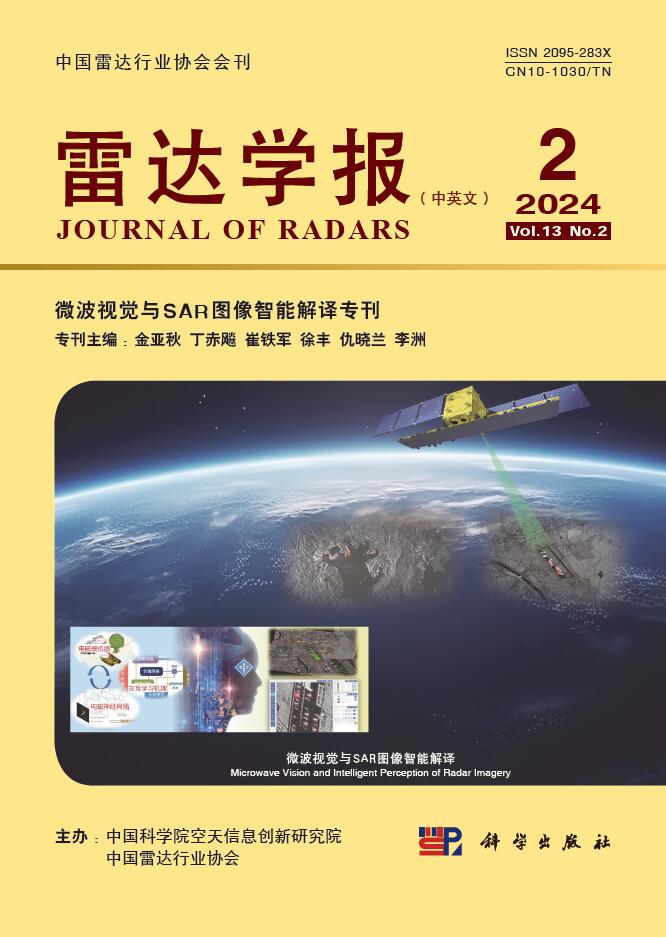





 DownLoad:
DownLoad:

